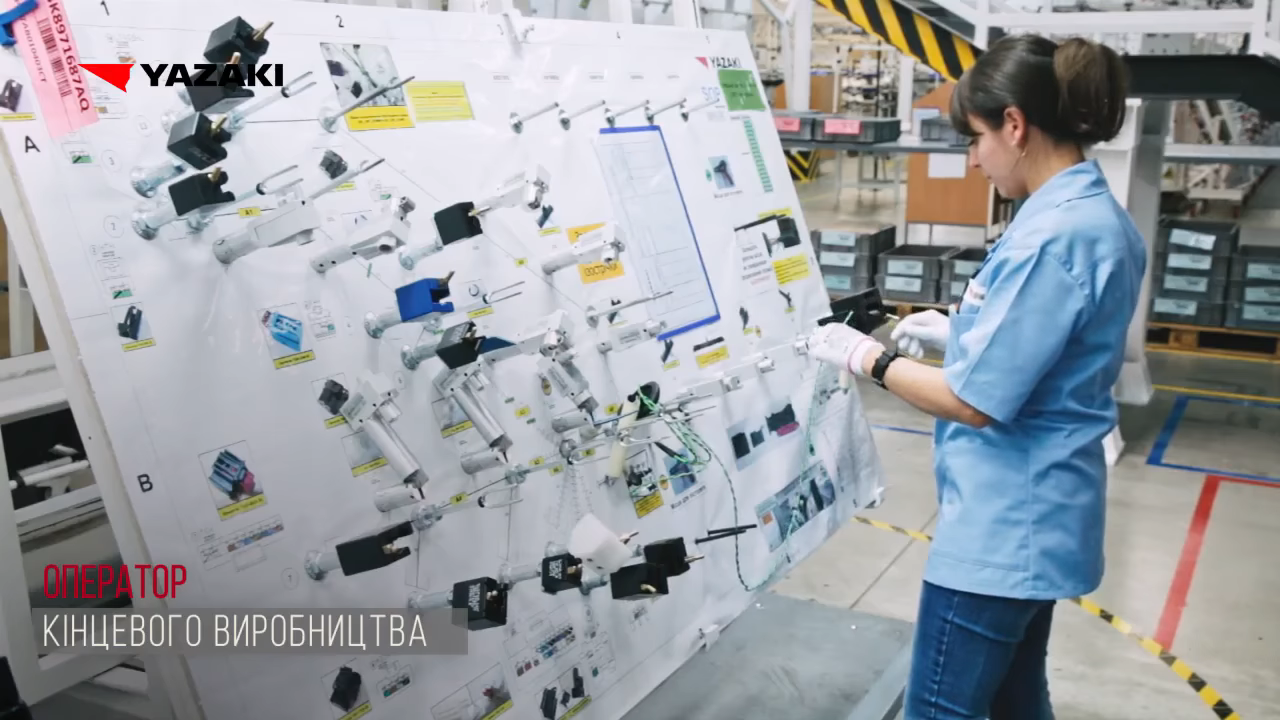The Surprisingly Manual Process Of Building Automotive Wire Harnesses
[ad_1]
Even from the incredibly earliest days of the vehicle age, cars and vehicles have been hybrids of mechanical and electrical style. For just about every piston sliding up and down in a cylinder, there is a spark plug that needs to be fired at just the right time to make the motor function, and stepping on the brake pedal had far better lead to the brake lights to come on at the same time hydraulic force pinches the wheel rotors involving the brake pads.
Without having electrical connections, a practical motor automobile is a simple impossibility. Even long just before electrical energy started off starting to be the gas of choice for motor vehicles, the wires that hook up the computer systems, sensors, actuators, and indicators needed to operate a vehicle’s methods have been receiving extra and far more difficult by the yr. Immediately after the engine and the frame, a car’s wiring and electronics are its third most pricey element, and it’s approximated that by 2030, completely half of the common vehicle’s price will be locked in its electrical program, up from 30% in 2010.
Earning certain all those people indicators get exactly where they’re heading, and executing so in a risk-free and reliable way is the career of a vehicle’s wire harnesses, the bundles of wires that seemingly occupy every feasible space of a modern-day motor vehicle. The style and design and manufacturing of wire harnesses is a advanced system that depends on specialised application, a degree of automation, and a shocking amount of money of persons-electricity.
Far more Wires Than Ever
The concept for this write-up came from a dialogue I had with Elliot Williams, and an off-hand point out of a chat he had with an engineer who makes software to structure motor vehicle wire harnesses. My first assumed was, “There’s application to do that?” which was immediately adopted by “Of training course there’s software to do that!”. The wiring needed to run a modern day car or truck is not a little something that can be finished advert hoc — wire harnesses are hugely engineered, both to manage the needs that will be placed on them electrically, and mechanically engineered to not only match in the room offered but to endure the rigors of maybe several a long time of use underneath tough environmental disorders.

Wire harnesses also have to be manufacturable as individual components. Auto and truck manufacturing is more and more only a ultimate assembly approach, exactly where staff include sections manufactured by deal suppliers to a vehicle’s body as it rolls down the line. And in fact, wire harnesses are amid the quite first parts added to the nascent auto, which is both equally evidence of their importance to the concluded solution as well as outlining how complicated it can be to obtain some of them if they will need to be serviced afterwards.
The layout of a wire harness begins very much the way any elaborate circuit style starts off: with a schematic. In most contemporary autos, fairly a great deal every little thing talks to 1 or more of most likely dozens of electronic management modules, scattered all over the motor vehicle to command everything from ignition timing and gasoline injection to HVAC controls and infotainment system options. Wire harnesses must be created for each ECM, to give ability and details connections to just about every sensor and actuator, with thought given to sizing the wire for the load, supplying ideal ground connections, and making guaranteed the good connectors are used.
Interdimensional Design
Even though the original structure process of a wire harness can use extra or significantly less normal EDA tools, sooner or later the two-dimensional schematic representation of the harness has to be translated to the 3-dimensional structure of the car or truck. For that job, additional specialised EDA and CAD resources are used. A major player in this planet looks to be CATIA by Dassault Systèmes, which has the tools desired to not only build the 2D schematic but to translate it into the 3D house of a auto chassis. These applications permit the designer to produce bundles of wires, increase connectors, determine branches off of the major bundle, established the paths about which every single bundle will be laid, and look for any contentions in between the harness and the rest of the structure of the auto. They also enable the designer to specify how the wires are heading to be bundled with each other — tape wrap as opposed to wire loom, for illustration — and wherever and how the harness will be hooked up to the automobile.
Physical restraint of the harness delivers up a further crucial layout consideration: slack. Creating the suitable amount of slack into each bundle and branch of a wire harness is essential. As well much slack is wasteful, each in terms of the copper wanted for the added wire and in phrases of lessened gas efficiency thanks to further body weight. Excessive slack can also direct to physical destruction to the harness many thanks to abrasion on the motor vehicle human body or frame members, or by snagging on street dangers or even being stepped on by passengers. Insufficient slack is a challenge, also — wires that don’t have some give may perhaps extend and split as the vehicle frame twists and flexes, and wires that are far too restricted may well make it difficult to undo connectors for repairs. Harness EDA resources are able of calculating the proper amount of money of slack for a bundle, and of inserting maintain-downs and restraints in the ideal place to make certain the wires flex just plenty of, but not much too substantially.
When the 3D design of the harness is finalized, the style has to be translated into anything that can be produced. And given that the major production techniques used for wire harnesses all count on the use of nail boards — much more on which below — the painstaking 3D design and style has to be flattened back into a 2D drawing. CATIA has automated tools for flattening, with the close outcome getting a 2D drawing that particulars particularly in which each wire in a bundle will go, which pin in which connector it will terminate in, and the place and what sort of equipment, like retaining clips, grommets, cable ties, or abrasion safety sleeves, will be added. The output from the flattening process signifies a comprehensive set of work guidance that can be despatched to a deal producer.
Staying in Excellent Type
With as automatic as nearly all producing has develop into, particularly for motor vehicles, where production runs in the hundreds of 1000’s are not unheard of, you’d feel that wire harness manufacturing will have to be totally automated. Just after all, how could a deal manufacturer be expected to preserve up with the volume of harnesses necessary by a fashionable motor vehicle plant, in particular with lean methodologies and just-in-time manufacturing? Certainly there have to be substantial CNC equipment that use the function guidelines to spool out wires and bundle them all collectively — right?
Completely wrong. Right after the style stage, virtually all wire harness manufacturing is strictly a hands-on organization. As it turns out, human dexterity and eye-hand coordination are actually tough to match with robots. Wire harness plants make use of countless numbers of personnel to hand-assemble practically every piece of a wire harness. Indeed, there are tools to assistance, but most of them are employed to minimize, strip, terminate, and coil up wire that will at some point be utilized by the human staff to make the harness, a person wire at a time.
The standard way of developing a wire harness is on a nail board. Also referred to as a sort board or harness board, this is basically a big flat surface area to which are attached a variety of fixtures to quickly keep wires and connectors. The fixtures are laid out to represent the flattened structure of the harness, and instructions printed on the board clearly show which wires are to be routed in which. Boards are ordinarily worked on vertically, leaning back again at a slight angle to hold wires from slipping off ahead of they are secured.
A person employee rarely would make an whole wire harness. Rather, a chain of identical nail boards is looped close to the factory ground on a driven carousel, gradually and consistently transferring from just one worker to the next. Every single employee provides a distinct established of wires to the developing harness in advance of the board moves together to the up coming worker with a different set of tasks. In addition to positioning wires, some staff are responsible for securing bundles with cable ties, adding protective sleeves, or wrapping the sections of the bundle in loom tape.
It’s these good motor abilities that make comprehensive automation of wire harness manufacture a difficult proposition. Threading wires by means of a length of plastic wire loom is a trivial task for most people, but would be challenging to establish a robotic to do. It’s truly worth noting, nevertheless, that this is real mainly because there are lots of individuals prepared to do these kinds of work for fairly low wages. Corporations like Yazaki, which presently has about 30% of the global market of wire harness manufacturing, use hundreds of countless numbers of men and women all-around the world, notably in producing spots. Financial forces currently favor the continuation of this product, but as we’ve viewed time and all over again, inevitably absolutely everyone wishes to be equipped to purchase the things they’re creating for other folks, so the offer of workers prepared to do this variety of function for reduced wages is limited. Potentially then it’ll make perception to make investments in comprehensive automation up and down the wire harness creation chain.
[ad_2]
Supply url








